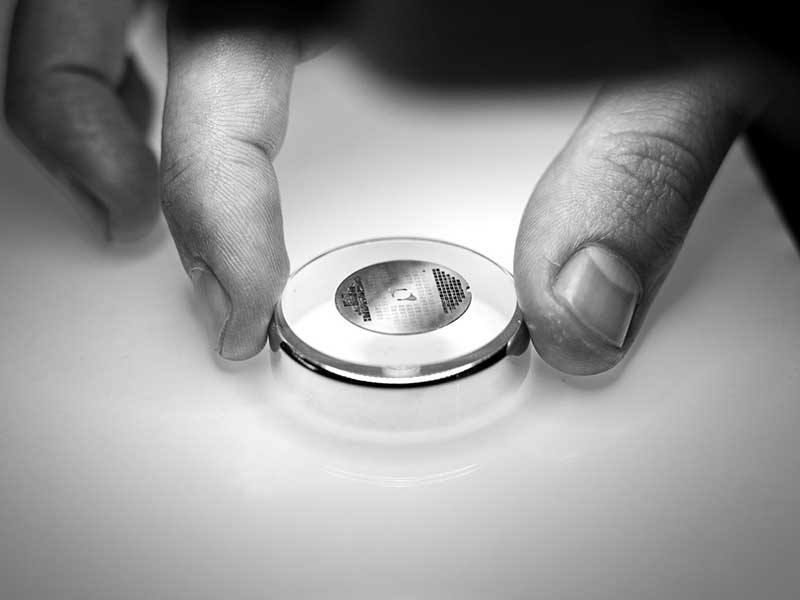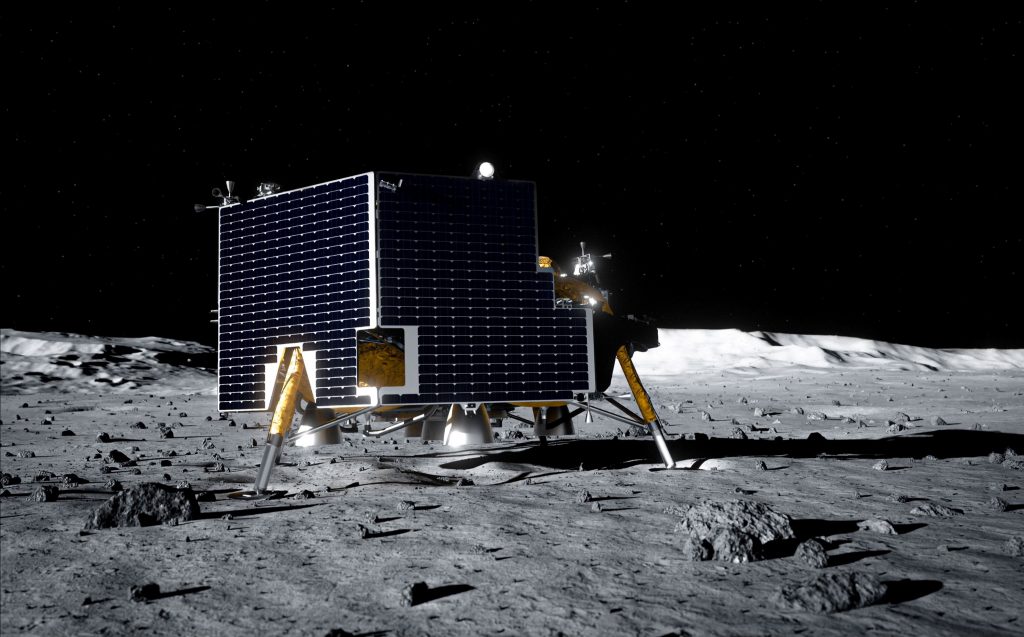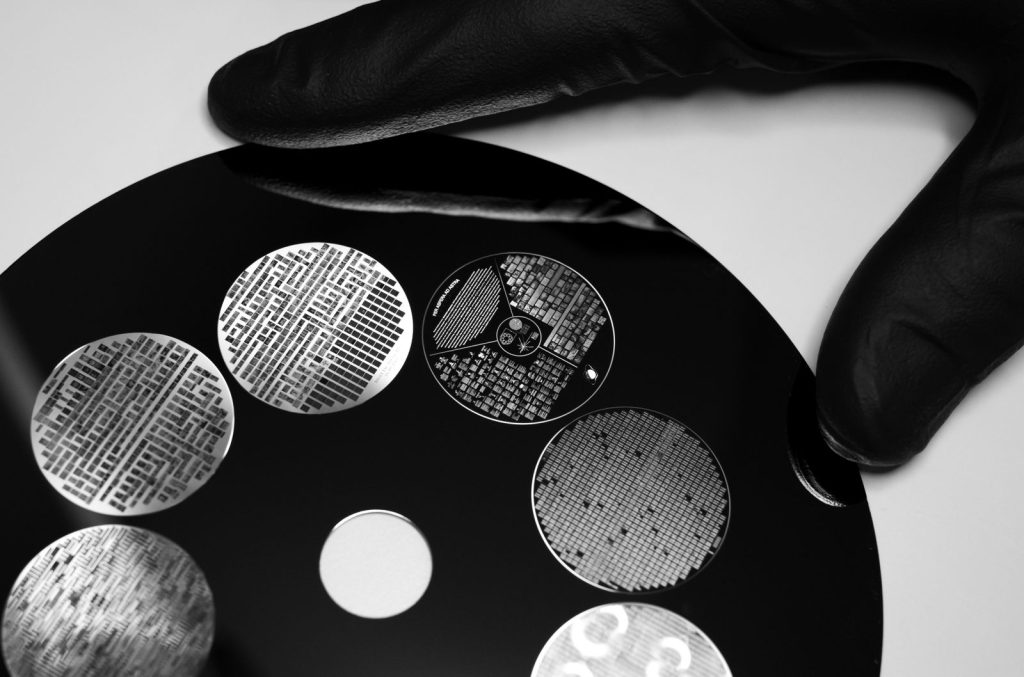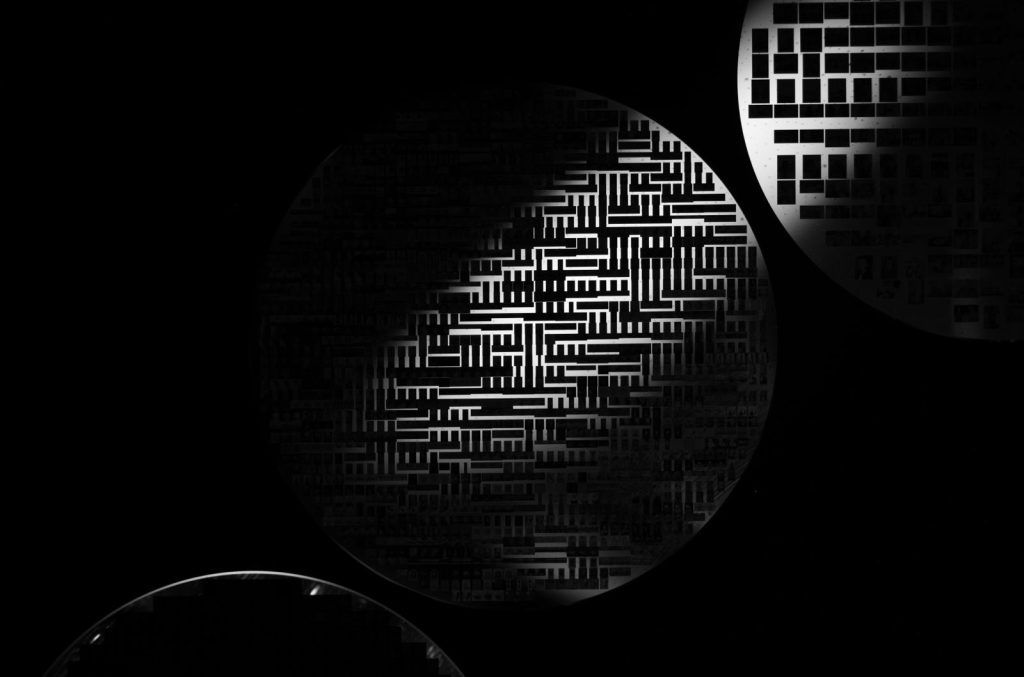
Pittsburgh, PA – March 27, 2025 – Today, Astrobotic, a pioneering force in space exploration, and Stamper Technology, developer of the archival technology NanoFiche, announced that Astrobotic’s next lander will deliver a NanoFiche archive, known as GLPH (Galactic Library Preserve Humanity), to the Moon as part of Astrobotic’s Griffin Mission One (Griffin-1).
Astrobotic’s lunar mission will be delivering several payloads to the Moon, as well as a suite of NanoFiche documents designed to survive harsh lunar conditions for millions of years. The archive aims to safeguard humanity’s intellectual and artistic legacy against terrestrial risks, ensuring messages and cultural touchstones from this moment in time are preserved for generations to come. Griffin-1 is scheduled for launch via SpaceX’s Falcon Heavy rocket from Cape Canaveral, Florida, no earlier than Q4 of 2025.

At the core of this mission is a breakthrough in data permanence: NanoFiche, a nanoscale inscription technology capable of etching literature, art, and intellectual milestones onto a nickel medium impervious to aging and deterioration. This archival initiative is a microscopic library of human achievements, ensuring human history, scientific breakthroughs, and cultural achievements, remain accessible even beyond Earth. Like ancient glyphs chiseled into stone, the format adheres to the traditional human-readable writings that existed since the dawn of human written history, now into metal. The content is retrievable with only the aid of optics and light. No complex codecs or sophisticated readers are needed.

“NanoFiche’s technology is setting a new standard in permanent data storage, resistant to environmental degradation and digital obsolescence,” says Bruce Ha, CEO of Stamper Technology. “Nano-inscribed as an easily decipherable human readable format, GLPH represents a critical aspect of human civilization, carefully selected to ensure art, science, and history are preserved for future discovery.”
GLPH will include contributions from Astrobotic’s data and document library, content from the reimagined Library of Alexandria, select archives from the Lunar Codex, historical documents and designs from the Rochester Institute of Technology for the Apollo program’s guidance computer enabling the first man to walk on the Moon, Meredith Willson’s Miracle on 34th Street the Musical, Long Now’s language codec to translate every language in the world, and more.
NanoFiche technology has been tested at the Hawai’i Space Exploration Analog and Simulation (HI-SEAS), facility, and is stable under thermal, mechanical, and radiation extremes. The medium is projected to endure on the Moon for millions of years, underscoring NanoFiche’s utility as a permanent data storage medium.
This mission also represents a key milestone for Astrobotic, whose lunar lander technology will transport and deploy GLPH to the Moon.
Those who wish to be part of this historic initiative can learn more at nanofiche.com.
More About GLPH
Curating Humanity’s Greatest Achievements
This mission is more than a technological breakthrough, it’s a cultural milestone. The first installment includes:
- The Reimagined Library of Alexandria includes: illustrated mythologies depicting ancestral warrior traditions from East Asia; a full-feature graphic novel chronicling the life and legacy of a visionary inventor who revolutionized modern energy; original screenplay and production materials from an independent cinematic exploration of global spiritual wisdom; technical blueprints of advanced AI automation models introducing new paradigms for sustainable food systems; and a curated collection of intergenerational Indigenous children’s stories, preserving oral traditions through tribal stewardship.
- The Lunar Codex– including works from the Burning Man project, Fine Arts Connoisseur, American Art Collector, Poets Artists Magazine, the Future Chronicles, Lightspeed Magazine, the Best African Poetry collections, Poet & Poem from the U.S. Library of Congress, the Indigenous Visual Art Collection, the Indigenous Music Collection.
- Forever Held– a song created by Creative Director Erica Bernhard, Music composed by Jon Hopkins and performed by Coldplay to the James Webb Telescope telemetry morphed into two dancers dancing amongst the stars.
- Meredith Willson’s Miracle on 34th Street, the Musical – For over 60 years, since its debut on Broadway in 1963, Miracle on 34th Street has become a Holiday Tradition. The national tour is produced by Premier Theater Productions, led by producer Jim Vollertsen.
- Apollo Guidance Computer Chip – A history behind the Apollo Guidance Computer designed by Eldon Hall at MIT with resistor transistor logic designs. The design and documentation of its recreation by Professor Santosh Kurinec and her team at the Rochester Institute of Technology, made possible by an original chip provided by Pamela Hall, Eldon Hall’s daughter.
- 100th Anniversary of the Field Effect Transistor (FET) – FET transformed and ushered in the electronic computing era and is turning 100. Its history and innovations will be recorded by the RIT group led by Prof. Santosh Kurinec with support from the IEEE Electron Device Society.
These works, and many more, will survive the tests of time, planetary change, and human limitation, ensuring that Earth’s story is never lost.

A New Standard in Permanent Data Preservation
The mission’s archival component is powered by NanoFiche’s patented technology, recognized as the gold standard in indestructible archival storage. Engineered to withstand space radiation, extreme temperatures, and the test of time, NanoFiche ensures that what is sent to the Moon today will be readable for thousands of years to come.
“Griffin-1 is carrying a suite of incredible payloads like Astrobotic’s own CubeRover and Astrolab’s FLIP (FLEX Lunar Innovation Platform) rover. We’re pleased to have Nanofiche’s important archive aboard, which has the potential to be the long-term data archival solution of choice in terrestrial applications,” said John Thornton, Astrobotic’s founder and CEO. “Our collaboration will mean a further test of its capabilities in one of the most extreme environments imaginable, on the Moon.”
“Art has the power to evoke emotions and provoke thought, while science pushes the limits of what we know. Together, they create something greater,” said Bruce Ha, Founder and CEO of Stamper Technology (NanoFiche). “With NanoFiche’s innovation and Astrobotic’s vision, we are not just sending records to the Moon; we are creating a permanent, global-access archive that ensures humanity’s legacy is never lost.”
Public Engagement and Legacy
Portions of GLPH will be donated to a major institution, details to be announced, allowing the public to explore this cosmic archive firsthand. Submissions for personal messages or contributions to future lunar libraries are under consideration, with details forthcoming from Astrobotic and NanoFiche.
About the Mission Partners
Astrobotic
Astrobotic is at the forefront of advancing space exploration and technology development. Their expertise spans from lunar rovers, landers, navigation, machine vision, and infrastructure to terrestrial rockets and mesh GPS systems for austere environments. To date, the company has been contracted for two lunar missions, and has won more than 60 NASA, DoD, and commercial technology contracts worth more than $600 million.
The Astrobotic team launched the first US commercial lunar lander to operate in space. Beyond helping lead America back to the Moon, the company develops and operates reusable vertical takeoff, vertical landing (VTVL) rockets and advanced rocket engines. Established in 2007, Astrobotic is headquartered in Pittsburgh, PA, with a propulsion and test campus in Mojave, CA.
www.astrobotic.com
NanoFiche
NanoFiche is a trademark and service mark of Stamper Technology. Since 2018, Stamper has been on a mission to preserve humanity’s knowledge by developing, designing, and implementing a suite of nano-engraving technologies on metal foil, including nickel and gold in its NanoFiche product.
The NanoFiche team has industry-leading experience through associations in the advanced technologies area, including with Rockwell Science Center, Hughes Aircraft, Raytheon, Pioneer Video, Technicolor and Eastman Kodak. Previous work included development of the Laser Disc format, the DVD format, the write-once SD memory specification, and the invention and commercialization of Picture CD technology, allowing both pre-recorded and recordable areas on a single disc. To date, the NanoFiche technology has been integrated on the Beresheet, Peregrine, Odysseus, Blue Ghost, and Resilience lunar landers.
www.nanofiche.com


